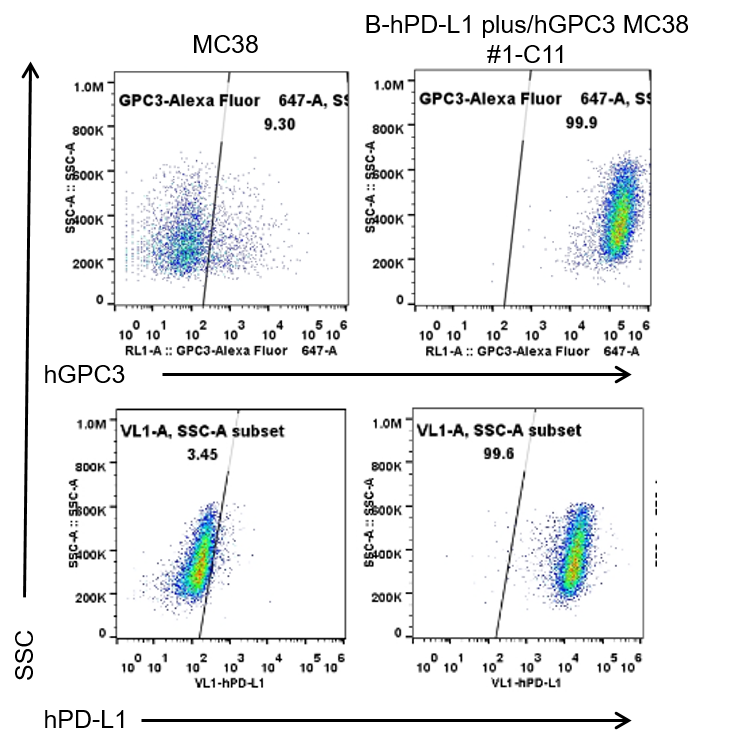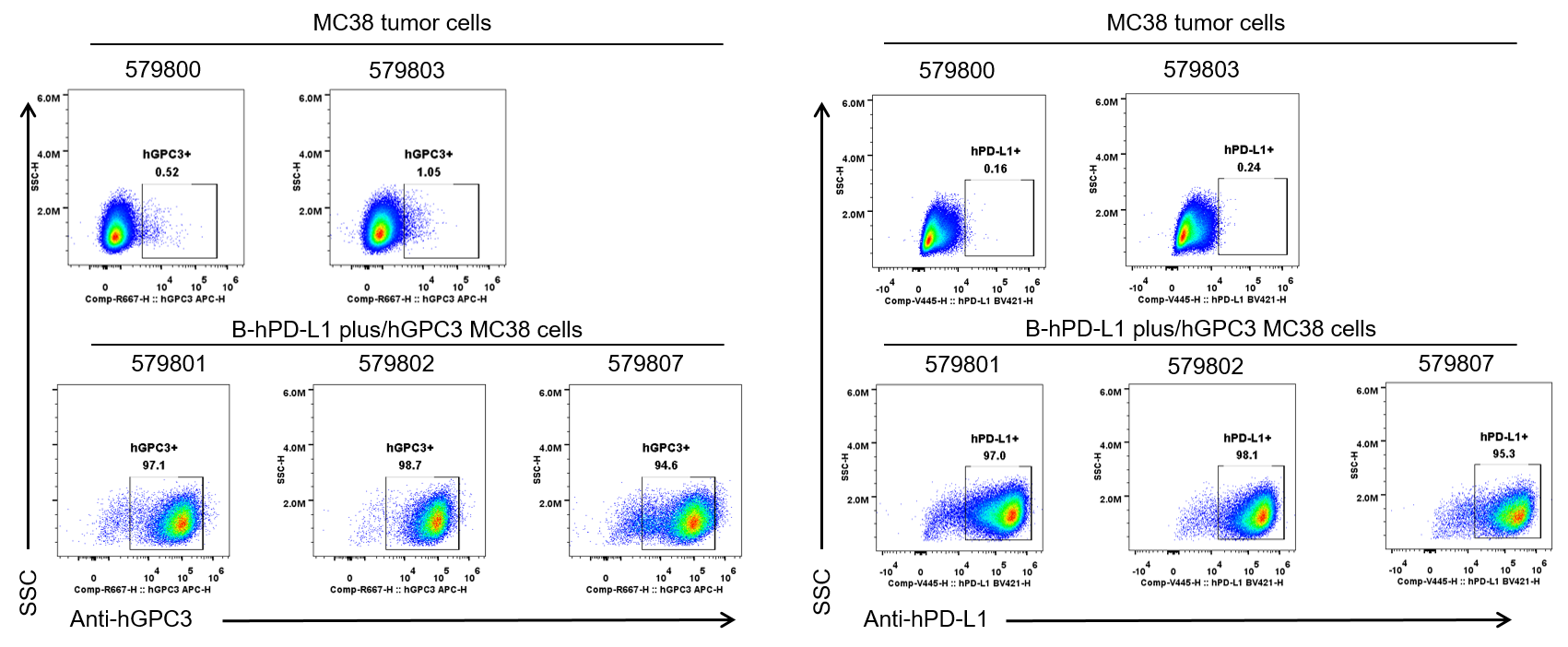
• 322418

| Product name | B-hPD-L1 plus/hGPC3 MC38 |
|---|---|
| Catalog number | 322418 |
| Strain background | C57BL/6 |
| NCBI gene ID | 2719,29126 (Human) |
| Chromosome | 19, X |
| Aliases | B7-H; B7H1; PD-L1; PDCD1L1; PDCD1LG1; PDL1; hPD-L1; DGSX; GTR2-2; MXR7; OCI-5; SDYS; SGB; SGBS; SGBS1; hPD-L1; DGSX |
| Tissue | Colon |
| Disease | Colon carcinoma |
Inoculated cell lines can be suspended with DMEM stock solution.
Before implementing the project, it is recommended to perform tumor growth experiments. The recommended cell inoculation amount is between 1E5-5E5.
In the experiment, it is necessary to ensure that the number of animals inoculated subcutaneously is at least 1.6 times the actual grouping number.

GPC3 and PD-L1 expression analysis in B-hPD-L1 plus/hGPC3 MC38 cells by flow cytometry. Single cell suspensions from wild-type MC38 and B-hPD-L1 plus/hGPC3 MC38 #1-C11 cultures were stained with anti-GPC3 antibody (in house, GC33-HuIgG1) and anti-PD-L1 antibody (Biolegend, 329706). Human GPC3 and human PD-L1 were detected on the surface of B-hPD-L1 plus/hGPC3 MC38 cells but not wild-type MC38 cells.

Subcutaneous tumor growth of B-hPD-L1 plus/hGPC3 MC38 cells. B-hPD-L1 plus/hGPC3 MC38 (5x105) and wild-type MC38 cells (5x105) were subcutaneously implanted into homozygous B-hGPC3 mice (7-week-old, n=6). Tumor volume and body weight were measured twice a week. (A) Average tumor volume. (B) Body weight. Volume was expressed in mm3 using the formula: V=0.5 X long diameter X short diameter2. Results indicate that B-hPD-L1 plus/hGPC3 MC38 cells were able to establish tumors in vivo and can be used for efficacy studies. Values are expressed as mean ± SEM.

GPC3 and PD-L1 expression evaluated on B-hPD-L1 plus/hGPC3 MC38 cells by flow cytometry. B-hPD-L1 plus/hGPC3 MC38 cells were subcutaneously transplanted into homozygous B-hGPC3 mice (n=6). Upon conclusion of the experiment, tumor cells were harvested and analyzed with anti-GPC3 antibody (in house, GC33-HuIgG1) and anti-PD-L1 antibody (Biolegend, 329706) by flow cytometry. Therefore, B-hPD-L1 plus/hGPC3 MC38 cells can be used for in vivo efficacy studies evaluating novel GPC3 and PD-L1 therapeutics.